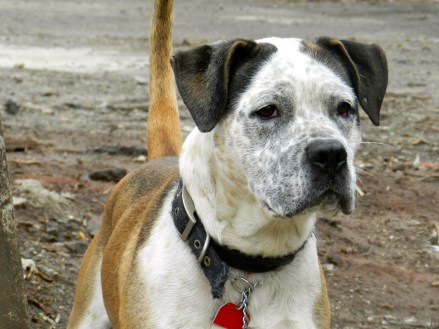Regular readers of this blog are familiar with Associated Humane Societies-Newark’s horrific history. In 2003, State of New Jersey Commission of Investigation (“SCI”) issued a scathing report on AHS. Specifically, the report stated AHS failed its animals on a grand scale:
The history of AHS’s shelter operation has been dominated by deplorable kennel conditions, inhumane treatment of animals by workers, mismanagement and nonexistent or inadequate medical care. The problems were neither singular nor occasional. The accounts and descriptions provided by members of the public and former and current staff members, including veterinarians, paint a bleak picture of shelter life. The reality for the animals belied AHS’s propaganda that its “sole purpose” has been “the care and welfare of animals” and that it has “a high adoption rate.”
The New Jersey Department of Health found AHS-Newark violating state law left and right in 2009. This inspection revealed AHS-Newark did the following:
- Illegally killed animals during state’s seven day hold period
- Left dead rotting animals in shopping carts outside
- Let dogs live in filthy kennels covered in feces
- Failed to properly treat sick animals
- Did not isolate sick animals from healthy ones
- Failed to properly clean animal enclosures
- Had an inadequate disease control program
- Did not list weights of animals and methods used to kill animals
- Did not properly keep animal intake and disposition records
- Facility needed repairs to prevent injury to animals
- Allowed animal enclosures to deteriorate to the point they could not be properly cleaned
Sadly, the New Jersey Department of Health continued to find significant issues during another inspection in 2011. The inspection report noted dogs housed in kennels with a collapsed roof and workers throwing damaged roof material directly over these dogs. Additionally the report stated outdoor drains were in severe disrepair, no isolation areas for sick large dogs existed, automatic dog feeders were filthy, dogs were exposed to contaminated water and chemicals during the cleaning process, and some animals were not receiving prompt medical care.
Last year, I wrote a blog highlighting potential violations from 2014. Specifically, records I examined suggested AHS-Newark may have violated state law as follows:
- Illegally killing animals during state’s seven day hold period
- Failing to properly treat sick animals
- Not keeping proper animal intake and disposition records
As a result of this review and the City of Newark’s Department of Health and Community Wellness failing to conduct robust inspections, I requested the New Jersey Department of Health inspect AHS-Newark.
After animal advocates got word of a joint New Jersey Department of Health and Newark Department of Health and Community Wellness inspection (undoubtedly the New Jersey Department of Health did most, if not all, of the work) last week, AHS-Newark attempted to downplay the results. Specifically, the organization made a Facebook post that included the following language suggesting AHS-Newark just needed to refine a few processes to make sure it is “operating at the highest level”:
Associated Humane Societies (AHS) Newark branch has recently been inspected by both the NJ State Health Department and the City of Newark Health Department. We are working closely with both agencies to ensure we are operating at the highest level we can so we may provide the best service possible to both the animals and the public. We look at this as an opportunity to review and improve our processes and to retrain established and new staff.
Was AHS-Newark being fully transparent with its statement? Does AHS-Newark have massive problems? Has AHS-Newark consistently had the same issues? What kind of “service” does AHS-Newark provide to the animals and the public?
You can view the inspection report here and the related photos here. All photos posted in this blog were originally sourced from the New Jersey Department of Health’s August 22, 2017 inspection of AHS-Newark.
AHS-Newark Violates State Law on a Massive Scale
According to the inspection report, AHS-Newark did not comply with state law to such an extent that the City of Newark could not issue the facility a license.
1.2 (a) and (b) The facility is not in compliance with these rules, therefore a satisfactory certificate of inspection for the current licensing year by the local health authority cannot be issued. The facility is currently unlicensed and a license for the current year cannot be issued by the City of Newark until the facility is brought into significant compliance.
Illegal Killing During Seven Day Protection Period
AHS-Newark illegally killed both stray and owner surrendered animals during the seven day protection period. In fact, AHS-Newark illegally killed many animals according to the inspectors. Given AHS-Newark violated this law in 2009 and should have known from my blog last year that it potentially violated the law in 2014, the shelter has no excuse for these actions. To make matters worse, AHS-Newark illegally killed surrendered animals at the shelter and its clinic next door. Clearly, AHS-Newark has no respect for life since it can’t wait a mere seven days to kill animals.
1.10 (a) 1. and N.J.S.A. 4:19-15.16 Many animals were being euthanized before being held the required 7 days after intake or impoundment. Records showed that stray and surrendered animals that were received at the facility by animal control officers and other individuals were being euthanized within the mandatory 7 day holding period. Stray impounded animals are required to be held at least 7 days to provide an opportunity for owners to reclaim their lost pets. Examples of animals euthanized within the required 7 day holding period include but were not limited to the following ID numbers: 22392, 22393, 22394, 22395, 22396, 22397, 22398, 22399, 22400, 23831, 22847, 22856, 23999, 24000, 22684, 23708, 23732, 23733, 19517, 22937, 22945, 22944, and 22936.
Animals were also being accepted for elective euthanasia and were being euthanized on intake. Although the animals were being taken to the medical ward section of the facility for euthanasia to be performed, the owner of the animal was paying the euthanasia fees directly to the animal facility at the front desk. The veterinary medical ward is not a separate entity from the animal shelter and impoundment facility. In the case of an owner surrender, the facility is required to offer the animal for adoption for at least 7 days before euthanizing it, or may transfer the animal to an animal rescue organization facility or a foster home prior to offering it for adoption if such transfer is determined to be in the best interest of the animal by the shelter or pound.
Records Suggest Killing and Euthanasia May Not Be Humane
AHS-Newark violated various euthanasia provisions of state law. Specifically, AHS-Newark did not:
- Post proper written euthanasia/killing instructions to assist people in conducting the procedure humanely
- Weigh animals prior to killing/euthanasia to ensure animals received proper doses of sedatives and killing agents
- Specify the method of killing/euthanasia
If AHS-Newark failed to provide enough sedatives, animals could experience emotional distress. Similarly, if AHS-Newark did not provide enough Fatal Plus and verify the animals’ deaths, animals potentially could have been placed into the facility’s incinerator while still alive.
1.11 (f) Written instructions were not posted in the euthanasia area that included the dosages by weight in pounds of all euthanasia, immobilizing, and tranquilizing agents used at the facility. Animals were not being weighed prior to administration of euthanasia, immobilizing, or tranquilizing agents. The weight recorded on an animal’s record at the time of intake was being used to calculate the dosages of these substances, but the weight on intake may not be the same weight of the animal at the time it is euthanized. Euthanasia records were not maintained that contained the body weight and dosage of all euthanasia, immobilizing, and tranquilizing agents administered to each animal. Dosage and usage logs were being maintained in a euthanasia log book, but this information was not available in the records reviewed by inspectors at the time of this inspection as required. (See 1.13 for more details.)
1.13 (a) Inspectors went to the medical ward of the facility and were provided with a stack of euthanasia records for animals that had been euthanized at the facility within the past month, but these records did not include the intake information and the description of the animals as required. The inspectors were unable to correlate the intake information and record numbers of animals that were obtained at the front desk to most of these euthanasia records. The weight of the animals was not being recorded on these paper records and the method of euthanasia, such as IV, IC, or IP, was not recorded in these records. Some of the euthanasia records were also missing the amount of euthanasia and tranquilizing agents that had been administered to these animals in addition to the species and description of these animals that had been euthanized.
Dead Animals Treated Like Trash
According to the inspection report, AHS-Newark had “bags of dead animal carcasses” next to the outside portion of its dog enclosures and close to its incinerator. Clearly, these bodies were outside for a long period of time since “a swarm of flies” were around the corpses. To make matters worse, more carcasses were dumped along with actual trash in a shopping cart just like the 2009 inspection report found. What kind of terror did the live dogs in the nearby enclosures feel with this stench of death in the air?
1.3 (d) There were bags of dead animal carcasses that had attracted a swarm of flies and were placed inside the gate adjacent to the dogs housed in the outdoor enclosures. These bags were stored outside of the walk-in refrigeration unit in the fenced area where the incinerator is located. There were additional bags of carcasses and trash stored in a red shopping cart in this same area that were also covered with flies.
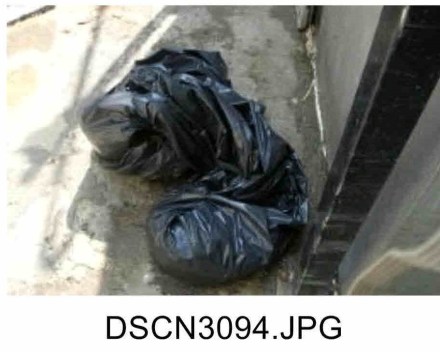
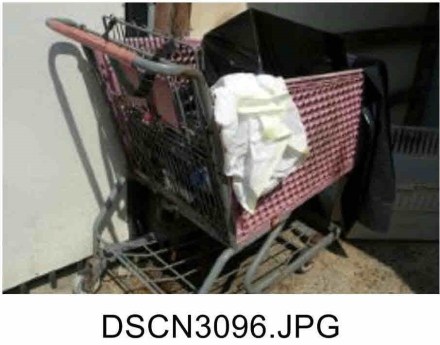

AHS-Newark Allows Disease to Spread Like Wildfire
Despite AHS taking in over $9 million of revenue last year, AHS-Newark failed to have a a supervising veterinarian establish a legally required written disease control and adequate health care program. Prescribed medicines were not administered to animals or given improperly according to shelter documents.
1.9 (a) The supervising veterinarian had not established a written disease control and adequate health care program at the facility and a disease control program was not being sufficiently maintained under the supervision of the veterinarian. Medications that had been prescribed by the veterinarian were not being documented as being administered as prescribed on the prescription label. Daily medication administration logs were missing several days, indicating that the medication may not have been administered on those days; daily medication logs were not being maintained and were not available on the shelter side of the facility; a prescription label for enrofloxacin prescribed to a dog with ID number 23466, stated to administer one tablet per day, but the medical chart on the computer stated twice per day.
The inspection report noted AHS-Newark did not separate sick animals from healthy ones. Isolating sick animals with contagious diseases is the cornerstone of any disease control program. In a shelter environment, one sick animal can quickly infect dozens more.
Shockingly, AHS-Newark did not provide veterinary care to a number of sick animals. Instead, it allowed a poor “listless” dog with “thick green nasal discharge” to sit in the main kennels. The animal caretaker in charge of medical care’s response? The dog “doesn’t look sick now.” Even worse, AHS-Newark kept dogs awaiting spay/neuter surgeries with coughing dogs having various contagious diseases. Since AHS-Newark typically only spays/neuters animals after someone adopts a pet, many adopters may have received a dog who was sick.
1.9 (f) Animals with signs of a communicable disease were not separated from other healthy animals and placed in an isolation room in order to minimize dissemination of such disease. Dogs that were said to have been diagnosed with Kennel Cough Complex by the supervising veterinarian and were prescribed medications, were housed in the general population. A brindle pit mix housed in kennel number 124 in the main kennel area of the facility, appeared listless and had thick green nasal discharge (pictures 3105 and 3106). This dog was not seen by a veterinarian and was not receiving medical care and was not moved to an isolation room. When this dog was pointed out by the inspector to the animal caretaker in charge of medical care, the caretaker stated that the dog “does not look sick now.” Animals in the general medical ward room, including one of the larger dogs that was heard coughing, were prescribed treatment for various illnesses and communicable diseases, but there were also healthy animals housed in this room that were awaiting spay or neuter surgeries before being released to their adoptive families.
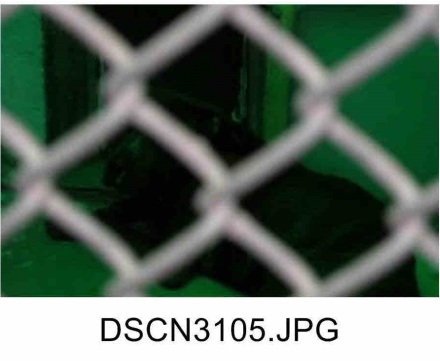

Even worse, AHS-Newark failed to even treat sick animals in the general population. If spreading disease to other animals was not bad enough, the inspectors specifically stated “animals exhibiting signs of stress were not provided any type of relief.”
Animals that were exhibiting signs of illness were housed with the general population and several animals that were being housed in the basement isolation room were not reported to and were not under the care of the supervising veterinarian. Animals exhibiting signs of stress were not provided with any type of relief. The disease control protocols established for the highly contagious isolation room located in the medical ward section of the facility were not being adhered to by the animal caretakers. (See 1.9 (d) through (h) for details.) There were signs on the door to two cat rooms that stated do not use until approved by Dr. Reich (the supervising veterinarian) but the manager and staff stated that they did not know why those signs were placed on the doors and why those rooms could not be used.
AHS-Newark staff allowed disease to spread from the isolation area to the rest of the facility. Animal shelter employees must wear various protective clothing and gear to avoid transmitting highly contagious diseases to healthy animals. Despite clear written instructions on the wall outside the isolation area, the AHS-Newark animal caretaker wore their gloves in the isolation area and outside of this space. In fact, this person even walked into the general medical area with these gloves exposed to highly contagious diseases. To make matters worse, the animal caretaker also took two water bowls from the isolation area to the general medical ward and the person stated they hose off litter boxes from the isolation area outside. Thus, AHS-Newark created conditions for disease to rapidly spread through and outside the facility.
1.9 (f) 1. There was a sign posted on the wall outside of the highly contagious isolation room located at the end of the hallway in the medical ward area of the facility that contained instructions and procedures to control the dissemination of disease. The sign listed two veterinarians to contact for questions, but neither of these veterinarians were listed as the supervising veterinarian for the facility. The animal caretaker that was cleaning the cages in this highly contagious isolation room was not adhering to the posted instructions. The instructions stated to wear personal protective equipment, including gowns and shoe coverings and gloves, and to remove PPE when leaving the room. The person that was cleaning this room on the day of this inspection left the room several times during the cleaning process, and was not wearing gowns or shoe coverings as instructed on the sign. This person did not remove gloves before leaving this room and walked to the restroom to fill a water bowl, touching the door handle with the used gloves on, and later walked to the general medical ward room at the other end of the hallway to use the utility sink and again to get paper for the cages in the highly contagious isolation room. When questioned, the animal caretaker stated that bowls from this highly contagious isolation room are cleaned in the utility sink located in the general medical ward room and litter boxes are taken outdoors and hosed off and cleaned outside. This practice of cleaning litter receptacles and other items outdoors, both from the isolation rooms and the general population creates the potential for disease transmission to the outside of the facility.
AHS-Newark locked up feral cats in a hidden prison. According to inspectors, the room’s glass walls were completely covered with cardboard preventing people from looking inside. Furthermore, inspectors couldn’t even see inside after removing the cardboard due to accumulated filth.
1.9 (d) Cats that were difficult to handle and classified as “feral” cats were housed in enclosures that contained glass walls that were completely covered with cardboard and newspapers. These cats could not be observed for signs of disease, illness or stress. When the inspectors pulled off a portion of the cardboard to try and view these cats, the glass beneath was too dirty to see through clearly. This enclosure door contained a padlock so the inspectors were unable to open the door to get a better view of the cats and the conditions inside this enclosure.
To make matters worse, the shelter provided no hiding boxes, soft bedding, resting benches and individual housing compartments to allow these cats to hide from other cats in order to relieve stress. Stressed cats are more likely to contract diseases. Simply put, AHS-Newark threw so-called feral cats into this room until they met their fate (presumably killing).
1.9 (d)2. The hiding boxes that had previously been used in the “feral” cat enclosures were removed due to deterioration and had not been replaced with alternate suitable hiding boxes. There were approximately 27 cats housed in one of these enclosures and these cats were not provided with soft bedding and hiding places, resting benches, or individual housing compartments to hide from other cats in the same enclosure in order to relieve stress.
AHS-Newark’s dog enclosures were kept in such disrepair that staff could not disinfect these places. Therefore, once disease spread from the isolation area or other places, the dog kennels probably became and stayed infected. If that wasn’t bad enough, AHS-Newark’s food storage area was also prone to harboring disease for the same reasons.
1.4 (f) The interior surfaces of the main dog kennel enclosures and throughout the facility were in severe disrepair. The layers of accumulated peeling paint and broken concrete in the animal enclosures and throughout the facility created crevices that were unable to be readily cleaned and disinfected. The food storage room had holes in the walls at the floor that had been filled with expanding foam. This foam was not cut back, leveled, and covered with an appropriate product to create a smooth surface before being painted which resulted in numerous nooks and crannies that could not be readily cleaned and disinfected.
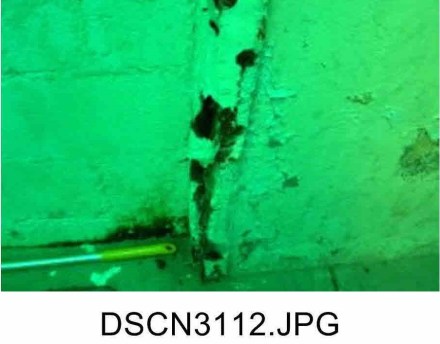
To make matters worse, cats in group housing resided in rooms with carpeted cat trees that contained accumulations of dried feces or vomit.
There were carpeted cat trees and sisal rope cat scratchers in the communal cat rooms that contained an accumulation of hair and dried feces or vomit. These cat trees and rope items cannot be cleaned and disinfected and need to be removed and replaced with suitable items as discussed with the manager at the time of this inspection. The window ledge in the communal cat room was in disrepair and was unable to be readily cleaned and disinfected; the caulking was in disrepair at the viewing window ledge and needed to be resealed.
AHS-Newark also may have provided contaminated food to animals. The shelter did not scrub off particles on food and water bowls. Water dispensing devices had accumulated grime. In the basement isolation area sink, AHS-Newark had a bowl of food with black mold growth. One has to wonder how long this food bowl sat there.
1.7 (e) and (h) Animal food bowls were not being scrubbed clean before being disinfected. Food and water bowls were emptied and sprayed down with a disinfectant, but were not scrubbed clean before the disinfectant was applied. There were food particles left on the inside surfaces of the food buckets after the disinfecting process and there was an accumulation of grime on the automatic waterers that the inspector was able to scrape off with her fingernail after the disinfecting process was completed. The manufacturer’s instructions for this disinfectant requires that food contact surfaces be scrubbed before disinfection and the instructions state “Then thoroughly scrub all treated surfaces with soap or detergent and rinse with potable water before reuse.” These food and water receptacles were not being scrubbed with a soap or detergent appropriate for food contact surfaces followed by a thorough rinse with potable water after this disinfectant was applied.
The utility sink located in the basement isolation room contained stainless steel bowls that had not been cleaned. There was a large serving spoon in one of these bowls that had caked on food, and the food in the bowl appeared to have signs of decomposition and black mold growth.

Similarly, AHS-Newark’s food storage area was a disaster. According to the inspection report, the shelter did not regularly clean this area and it accumulated spilled food, pigeon feathers and other debris.
The food storage room was not being cleaned regularly and there was an accumulation of spilled food, trash, pigeon feathers, and debris under and between the bags and boxes of stored food. The areas between and under the roll out banks of stainless steel caging contained an accumulation of dirt, trash and debris and were not being cleaned.

If all of this was not bad enough, AHS-Newark did not even clean its kennels properly. Specifically, the geniuses at AHS-Newark sprayed disinfectant in kennels before removing all the feces. Even after using a rake to remove the feces, they did not remove “a thick layer of feces that remained on these surfaces.” Thus, the shelter did not disinfect the animal enclosures.
1.8 (c) Enclosures were not being thoroughly cleaned and rinsed as required by the manufacturer’s instructions before the disinfectant was applied to non-food contact surfaces. The disinfectant was being sprayed into the kennel enclosures before the feces were removed from these enclosures. The animal caretakers were instructed to scoop the feces from the enclosures, but after they scooped with a rake, there was still a thick layer of feces that remained on these surfaces that was not scrubbed off and rinsed away before a fresh application of disinfectant was applied. The manufacturer’s instructions state “Thoroughly clean all surfaces with soap or detergent and rinse with water. Apply fresh Use Solution to floors, walls, cages and other washable hard, non-porous environmental surfaces.”

AHS-Newark Leaves Animals in Inhumane Conditions
AHS-Newark left a live skunk in unspeakably cruel conditions. According to the inspection report, the shelter picked up a live skunk at 7:00 am or 7:30 am and subsequently left the animal in direct sun in a blanket covered carrier on a concrete surface with air temperatures as hot as 87 degrees. The inspector found the animal at 11:20 am. Undoubtedly, the actual temperature inside the carrier was hotter since it was on a concrete surface. To add insult to injury, AHS-Newark left the skunk next to a bag of dead animals and an incinerator. The shelter effectively left the animal to die in these hot temperatures and allowed the skunk to sense its fate with the bag of slaughtered animals and incinerator close by. The AHS manager initially told the inspector no animal was in the carrier, but when the inspector showed them the skunk, the AHS manager stated the skunk was dead. Would AHS-Newark have placed this live animal into the incinerator if the inspector was not there? Only after the inspector notified shelter personnel did AHS-Newark move the skunk to a cooler place. What medical care did AHS-Newark ultimately provide? Killing later that day.
1.5 (a) A live skunk was found inside a small animal carrier which was completely covered with a heavy, black and white heather blanket and placed in direct sunlight on a concrete surface. The outside air temperature was approximately 85 to 87 degrees Fahrenheit at the time the skunk was found by the inspector at approximately 11:20 AM. This skunk was found adjacent to a bag of dead animal carcasses in the fenced area between the outdoor animal enclosures where the incinerator is located. When questioned, the manager stated that the carrier was empty, but when the inspector lifted the blanket and saw the skunk, the manager said the skunk was dead. The inspector told the manager that the skunk was alive and needed to be moved immediately out of the direct sunlight and placed in a cool location. The manager moved the skunk over several feet out of the direct sun and shortly after, the skunk was placed in the hallway of the building and was euthanized later that day. Records indicated that this skunk was picked up at 7:00 or 7:30 AM that morning (report shows 7:00 AM over written with 7:30).


The shelter left a poodle in an enclosure on cardboard instead of proper bedding. As a result, the animal had urine soaked fur on its rear end and could not remain dry and clean.
1.6 (a) 4. A white poodle type dog housed in the small dog room had urine soaked fur on its rump and its legs and was unable to remain dry and clean. A large sheet of cardboard was being used as bedding in some of the small animal enclosures, which may be sufficient for cats that are provided with a separate litter receptacle, but this cardboard is not readily absorbent and liquids bead up long enough for the animals contained in these enclosures to become contaminated.

AHS-Newark housed a mastiff in such a small enclosure that the animal could not turn about freely and lie in a comfortable position.
1.6 (a) 6. There was a large black mastiff type dog, ID number 23294, housed in a small enclosure, cage number 176, located against the back wall of the main basement housing area. This enclosure did not provide sufficient space for this dog to turn about freely and to lie in a comfortable normal position.
If this dog did not endure enough torture, the poor creature was left in the dark. How dark was his kennel? During the day, the inspectors could only see a reflection of the animal’s eyes and a shaded figure from outside the enclosure.
1.4 (d) There were lighting fixtures that needed repair throughout the facility, including the lighting fixture in the basement above enclosure number 176 that housed a large, black mastiff type dog. The lighting in this enclosure was insufficient and only the reflection of the eyes and a shaded figure of the dog could be seen from the front of this enclosure. (This dog can be seen in picture 3159 because of the camera flash.)

Animals other than cats and dogs did not escape AHS-Newark’s neglect. According to the inspection report, the exotic animal room contained an “accumulation of rabbit feces and urine” and “most of this feces and urine had dried and adhered to these surfaces.”
The room where the exotic animals were housed contained an accumulation of rabbit feces and urine on the walls, on the electrical outlet, behind the filing cabinet and on the floors and baseboards around and under the rabbit enclosures and the filing cabinet. Most of this feces and urine had dried and adhered to these surfaces. There were white urine stains from the rabbits that had dried and set on the floor tiles surrounding these rabbit enclosures. The bars of these cages and the wheels contained an accumulation of feces and other dirt and debris and were not being cleaned and disinfected daily as required.

AHS-Newark also failed to properly exercise dogs residing in small kennels as required by law. To make matters worse, AHS-Newark did not even allow dogs with a “vicious disposition” in the basement or in the small dog room to go for walks or to exercise in larger dog runs at all.
1.6 (h) Adult dogs confined in cages of less than double the minimum standard size were not being exercised in runs at least twice a day or walked on a leash for at least 20 minutes per day. Dogs housed in the basement enclosures and dogs housed in the small dog and cat room were not provided with runs to exercise and only some of these animals were being walked on a leash daily. The few dogs that were walked on a leash were said to be provided with a maximum of 5 to 10 minutes of walking time and there was not enough staff available to walk each dog for at least 20 minutes per day. Dogs with a vicious disposition that were housed in the basement or the small dog and cat room were not walked at all and did not have access to an exercise run.
AHS-Newark left several ill and injured dogs in enclosures without providing veterinary care. Two dogs appeared to have blood in their urine, one dog had diarrhea and vomited, and a third dog had an open wound on its paw. Even several dogs in the so-called basement isolation area did not receive veterinary care.
1.9 (d)1. Two dogs housed in the main dog kennel area appeared to have blood in their urine (pictures 3098 and 3099) and a shepherd type dog, ID number 23882, housed in the general housing area of the basement had diarrhea and had vomited its food. A white bully type dog had an open wound on its paw and there was no evidence that this dog was provided with medical care (picture 3157). Several animals that were housed in the basement isolation room were exhibiting signs of illness but the manager stated that these dogs had not yet been seen by a veterinarian and were not receiving medical treatment. Examples include ID numbers 23694, 23090, and 23572. Numerous animals housed in the medical ward holding room were prescribed medication, but the medical treatment logs were incomplete. Examples include, but were not limited to, ID numbers 23063, 22870, and 23378.



AHS-Newark’s housing facilities were deplorable. According to the inspection report, “there were holes in walls in numerous rooms large enough for rodents to traverse.” Additionally, the inspection report noted “concrete flooring and block walls were in severe disrepair throughout the entire facility, with large cracks and chunks of missing concrete.” AHS-Newark even left “a large chain-link gate balanced on top of the outdoor dog enclosures; a strip of welded wire hardware cloth with exposed sharp pointed wires” hanging over the outdoor dog enclosures with a bowl, a bottle and other debris on top of these kennels. Simply put, AHS allowed its Newark facility to fall apart despite taking in around $8 million of revenue on average each year for the last decade.
1.3 (a) The housing facilities for animals were in disrepair. There were holes in the walls in numerous rooms that were large enough for rodents to traverse. Concrete flooring and block walls were in severe disrepair throughout the entire facility, with large cracks and chunks of missing concrete. The concrete flooring was peeling off in sheets. There was a large chain-link gate balanced on top of the outdoor dog enclosures; a strip of welded wire hardware cloth with exposed sharp pointed wires was hanging over the outdoor enclosures; and a bowl, a bottle with unknown contents and other items and debris were found on top of these animal enclosures. There were screws protruding from the wall in the “feral” cat enclosure where the original hiding boxes had been removed.

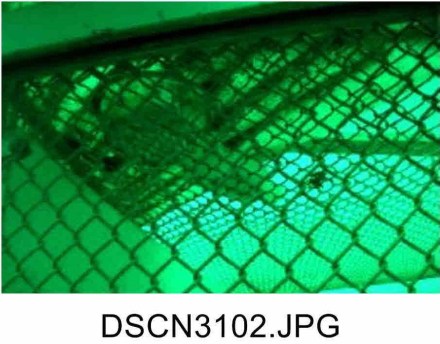
In fact, the inspectors appeared concerned that a wall located at the door to the exterior kennels could collapse.
There was a large structural crack near the upper portion of the wall located at the door to the exterior kennels, where the concrete blocks or cinder blocks had separated and moved away from the inside wall. The attendant stated that this wall had not been evaluated by a qualified engineer and it was not determined if the wall would collapse.
The inspection report noted numerous facility problems that could injure animals. In the following example, AHS-Newark left damaged dog beds in enclosures that had exposed screws and sharp edges.
1.6 (a) 7. Many of the raised dog beds had damaged metal and plastic hardware that join the legs to the frame and support the beds. This hardware had exposed screws and sharp edges that could cause injury to the dogs. Some of these beds had damaged areas with sharp points from broken plastic legs and other chewed areas that could cause injury to the dogs.
Similarly, another dog enclosure contained a drainage pipe with no cover that could injure a dog’s legs:
1.6 (a) 2. There was a large, round, open drainage pipe in an outdoor dog enclosure that was missing a cover, which left an opening in the floor. This hole could cause leg injuries to the dogs housed in this enclosure.
The shelter’s main and outdoor dog kennels were exposed to water. HVAC vents were leaking water in the main dog kennel area. Water leaked from an air handling unit in the basement into an animal enclosure. Runoff from clogged gutters overflowed into the outside dog area. Therefore, dogs were housed in areas exposed to leaking water.
The air conditioning system was not being properly maintained or had not been properly installed to control water runoff from the various units. Water was leaking from the inside of the HVAC vents in the main dog kennel area; water was leaking from the air handling unit in the basement into an animal enclosure; and there was a heavy stream of water from an unknown source that was flowing off the roof into the gutter. The gutter was clogged with debris and this runoff was overflowing into the outside dog kennel area.
AHS-Newark’s ventilation systems had systemic problems. Despite the inspection taking place in August, AHS-Newark provided insufficient ventilation to dogs housed in the basement. Ventilation systems in other areas were filthy and/or in disrepair.
1.4 (c) The ventilation in the basement was insufficient to provide for the health and comfort of the animals housed in these rooms. The large exhaust fan in the general animal housing area of the basement was not being used at the time of this inspection, and the ventilation that was previously installed had been disconnected. The vent cover in the isolation room was cracked and contained an accumulation of dirt and debris. The ventilation covers in the general housing areas and other rooms throughout the facility also contained an accumulation of dirt and debris and needed to be cleaned. The plastic ventilation duct connected to the portable ventilation unit in the isolation room was improperly installed and was hooked to a piece of welded wire hardware cloth that was covering what appeared to be an obscured basement window opening. There was a piece of plexiglass type of plastic partially covering this window opening on the inside, in front of the hardware cloth.
The shelter’s basement, which houses dogs, had debris with “a long, roundworm like appearance” and other debris that had “the appearance of soaked rodent droppings.”
There was an accumulation of unrecognizable debris, some of which had a long, roundworm like appearance (possibly fibers of some sort), intertwined with small oblong pieces of debris that had the appearance of soaked rodent droppings. This debris had accumulated in the far corner under the utility sink located against the front wall in the basement.
If that was not bad enough, the upper storage area above the inside dogs kennels had “an excessive accumulation of rodent droppings.” Not only did AHS-Newark dogs have to live in poor conditions, but they had large amounts of rodent feces nearby.
There was an accumulation of rodent droppings in an upper storage area over the inside dog kennels and an excessive accumulation of rodent droppings in the long florescent light fixture in this same area.
Why did the shelter harbor so many rodents? The inspection report notes pet food was spilled all over the facility. Furthermore, AHS-Newark kept bags of donated food in a “haphazard” pile 3 to 4 feet high against a wall that facilitated rodent infestations.
1.3 (c) Food was spilled on top of food bags and on the floor between the wooden pallets in the food storage area located in the basement. Pieces of kibble were also found spilled in numerous locations throughout the facility, including in rooms that were not being used. Kibble was found between the fins of the baseboard radiators and under these radiators, under cages, in corners, behind storage items, inside cages that were said to have been cleaned, and there were pieces of kibble found next to rodent bait stations.
Bags of dry food that were said to have been recently donated were stored haphazardly in a pile approximately 3 to 4 feet high and touching the wall in the basement food storage room. Bags of purchased food were also stored against the wall. Food should be stored away from the wall and in a manner to facilitate cleaning in and around the bags of food, to prevent rodent harborage and infestation and to allow for sufficient ventilation to prevent moisture accumulation and molding of food.
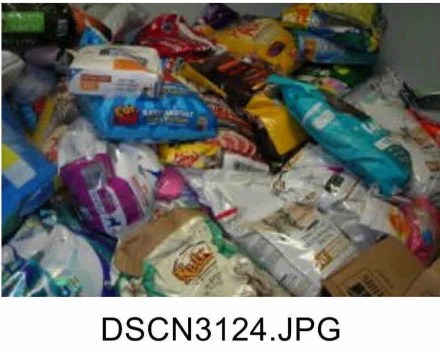

Improper Intake and Disposition Records Raise Concerns of More Killing
The inspection report noted AHS-Newark failed to include the ultimate disposition of a number of animals in its records. In other words, we don’t know what happened to these creatures. If AHS-Newark failed to record what happens to all of its animals, its kill rate may be higher than it reports.
1.13 (a) Computer records were being maintained, but staff was unable to access certain disposition records, including the required euthanasia documentation, and the paper records were incomplete. Inspectors were provided with a stack of paper intake records for animals received at the facility for the past month, but these records did not include the disposition records for these animals, and the inspectors were not provided computer access to review the records for these animals. A few records were selected by inspectors and the office staff could provide the disposition information for a small number of animals, but most of this information and the details were not readily available and the euthanasia information was inaccessible to the staff at the front desk.
NJ SPCA Must File Large Numbers of Animal Cruelty Charges
AHS-Newark committed atrocities against its animals on a massive scale. Frankly, I’ve never seen any New Jersey animal shelter treat animals this badly. Given this blog reported heinous conditions at many other state shelters, this says a lot. From leaving a skunk in a covered carrier during a hot August day next to dead animals and an incinerator, to leaving ill and injured animals to suffer, to allowing highly contagious diseases to spread, to illegally killing animals during the seven day protection period, to possibly killing animals inhumanely, to having dead bodies in bags and a shopping cart for apparently long periods of time near an area housing live dogs, to leaving animals in conditions where they could injure themselves, AHS-Newark proved over and over again that it must be brought to justice.
Most troubling, the inspection report found the same problems, and even some new ones, documented in the 2003 SCI report and the horrific 2009 and 2011 New Jersey Department of Health inspection reports. Roseann Trezza was the Executive Director during the 2009 and 2011 inspections and was Assistant Executive Director when the SCI issued their report. Simply put, the NJ SPCA must throw the book at Roseann Trezza. This woman should not work with animals let alone lead the state’s largest animal sheltering organization. In the past, the NJ SPCA never went after AHS. Perhaps, this was due to former NJ SPCA Deputy Chief and Board President, Terrence Clark, also being Assistant Executive Director of AHS at the time? Whatever the reason, the NJ SPCA must act strongly if it wants to keep what little credibility it has left.
Municipalities Must Terminate Contracts with AHS
AHS-Newark contracting cities and towns can no longer fund this out of control house of horrors. While taxpayers should not support a high kill shelter, they should never pay an entity repeatedly violating state law on a massive scale. If the elected officials do not terminate their contracts with AHS-Newark, their political opponents should make this a campaign issue by running ads with the elected officials’ photos and pictures and language from this inspection report. Simply put, taxpayers should not have to tolerate spending their money on an organization treating animals like literal garbage over and over.
While some people may worry about shelter capacity issues if these municipalities leave AHS-Newark, this is not a significant problem. As I’ve documented in other blogs here and here, the state’s animal shelter system has more than enough space to absorb AHS-Newark’s animals if shelters’ use their full capacity and move animals into safe outcomes as quickly as other good animal control shelters. Specifically, all the municipalities, other than the City of Newark, are not large and do not have too many homeless animals. In the case of the City of Newark, it could request the New Jersey Department of Health to allow Newark to send its animals to several facilities in order to not overwhelm any single one.
At the same time, Newark Mayor Ras Baraka must re-start former Mayor Booker’s project to build a new no kill shelter in the city. While the City of Newark whould never have been in this position if it started building the shelter as planned in 2013, it now has all the justification it needs to take on this initiative.
Residents in the following municipalities should contact their mayors using the information below and demand they terminate their arrangements with AHS-Newark.
Belleville: (973) 450-3345
Carteret: (732) 541-3801
Clark: (732) 388-3600
Fanwood: (908)-322-8236, ext. 124; mayor@fanwoodnj.org
Hillside:(973) 926-3000
Newark: (973) 733-6400; https://www.newarknj.gov/contact-us
Irvington: (973) 399-8111
Linden: (908) 474-8493; darmstead@linden-nj.org
Fairfield: (973) 882-2700; jgasparini@fairfieldnj.org
Orange: (973) 266-4005
Plainfield: (908) 753-3000; adrian.mapp@plainfieldnj.gov
Roselle: (908) 956-5557; cdansereau@boroughofroselle.com
Rahway: 732-827-2009; mayor@cityofrahway.com
Winfield Park: (908) 925-3850
New Jersey Department of Health Must Inspect AHS-Tinton Falls and AHS-Popcorn Park
Given the massive problems at AHS-Newark, one has to also wonder how AHS-Tinton Falls and AHS-Popcorn Park operate. The New Jersey Department of Health has not inspected these other facilities in recent years. As a result, we need to know if AHS-Newark’s problems also occur at its sister shelters.
State Agencies Must Replace the Entire AHS Board and Executive Leadership
The AHS Board of Directors allowed Roseann Trezza to operate her facility without effective oversight. Roseann Trezza is the President of the Board of Directors. Furthermore, many of the AHS board members are employees/former employees or have other potential conflicts of interest that seriously question their ability to oversee this failing organization. Thus, the AHS board failed over and over to fix their organization’s catastrophic problems.
After the SCI released its 2003 report on AHS, AHS Executive Director Lee Bernstein resigned and Roseann Trezza took over. However, as we’ve seen over and over during the last 14 years, all of the awful AHS leadership needed to go.
As such, the various state agencies overseeing AHS should do everything in their power to force AHS to replace its entire leadership team and Board of Directors. Despite these massive issues, including significant structural issues potentially requiring a new facility, AHS has made statement to the press giving lame excuses and portraying that its well on its way to solving the catastrophic problems. Clearly, this organization is not serious about improving itself to any significant degree. If AHS wants to continue operating animal shelters, it must change its entire organization and not make a few minor tweaks as its recent Facebook post about the inspection implied. Creating a commission with no kill leaders and other innovative figures in the animal welfare movement can help put the right people in charge of the state’s largest animal sheltering organization. As a result, we can transform AHS-Newark from a house of horrors into a temporary home that provides love, elite care, and new lives to all healthy and treatable animals.











































